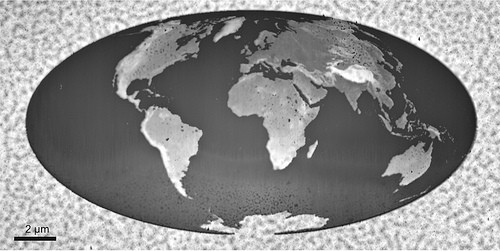Hogg and Freitas provide a theoretical analysis of the power constraints when nanorobots rely entirely on ambient bloodstream oxygen and glucose and identify aspects of nanorobot design that significantly affect available power.
Hogg and Freitas provide a theoretical analysis of the power constraints when nanorobots rely entirely on ambient bloodstream oxygen and glucose and identify aspects of nanorobot design that significantly affect available power.
Self assembly of aromatic dipeptide into nanospheres stiffer than Kevlar may make possible printing stronger, lighter body armor.
Molecular dynamics calculations define optimum strand lengths for the assembly of DNA films as greater than 10 and less than 30 nucleotides.
Zyvex Labs researchers demonstrate atomically precise removal of 50 hydrogen atoms per second from a silicon surface.
An energy cell containing a lead zirconate titanate cantilever coated with a carbon nanotube film uses nanotechnology to produce electricity from scavenged light and thermal energy.
Reconfiguring the topology of DNA nanostructures offers novel architectures for nanodevices.
DNA springs mechanically control an enzymatic reactions by exerting force on specific parts of the enzyme molecule.
Unique properties of two-dimensional arrays of carbon atoms promise both immediate applications and advantages for the development of advanced nanotechnology.
Projects exist for aggregating personal computers into one large project for various worthy purposes, from space to biology research, some nanotech-related such a protein folding. Now IBM has a similar project with the goal of developing nanotechnologies for clean water. From Grist.org: In China, Tsinghua University researchers, with the help of Australian and Swiss scientists,… Continue reading Donate your laptop time to nanotech R&D for clean water

Forbes describes work at IBM Zurich: IBM researchers in its Zurich lab have drawn–or rather, carved–a three-dimensional map of the world that’s 22 micrometers east to west by 11 micrometers north to south. At that size, about 15 of the maps could be wrapped end to end long-ways around a strand of human hair, by… Continue reading IBM makes world map 1000 times smaller than grain of sand